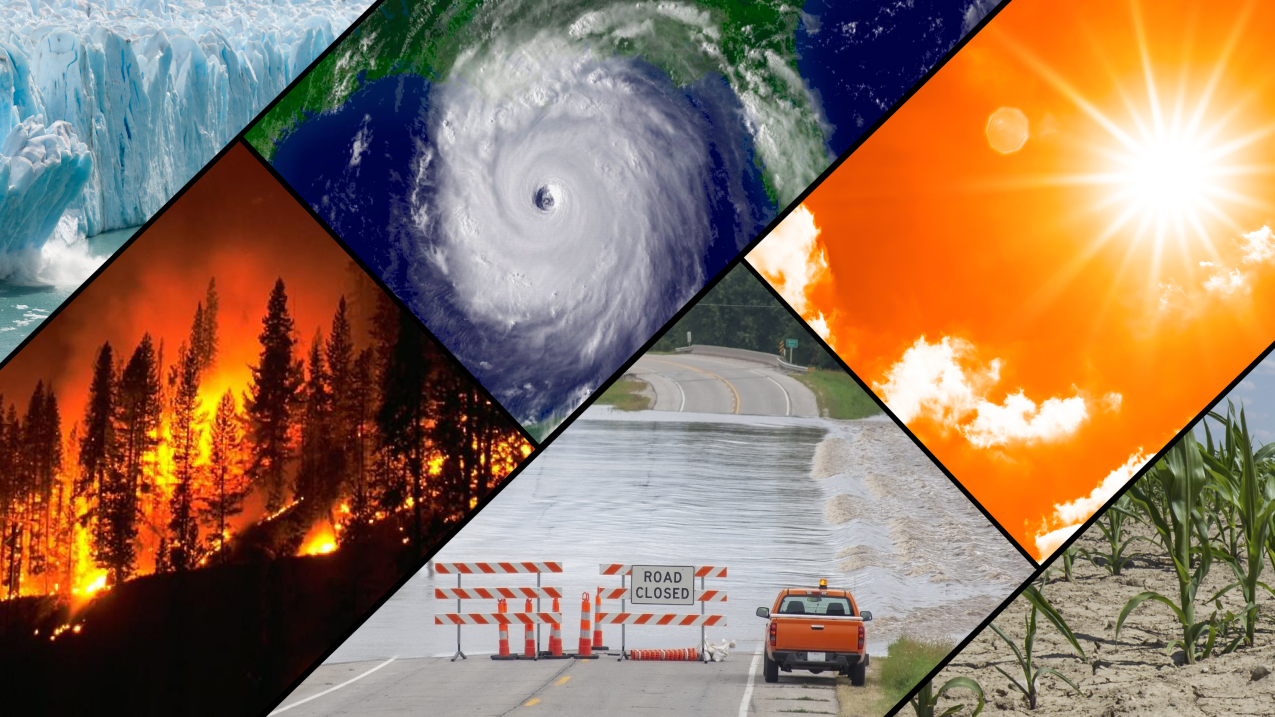Impacts of Climatic Changes on India

📰 Climate Change and Its Real Impact on India
Introduction
Climate change is no longer a distant threat — it is happening now, and its effects are being felt across the globe. For a country like India, with its vast population, agrarian economy, and diverse geography, the impact is especially severe. From scorching heatwaves to devastating floods, climate change is already altering how Indians live, work, and survive.
In this article, we will explore the real and current effects of climate change on India, the science behind it, and what individuals, communities, and the government can do to respond.
1. What Is Climate Change?
Climate change refers to long-term shifts in temperatures and weather patterns, mainly caused by human activities — especially the burning of fossil fuels like coal, oil, and gas. These emissions trap heat in the atmosphere, leading to global warming and unstable weather.
Key causes:
-
Greenhouse gas emissions (CO₂, methane)
-
Deforestation
-
Industrialization
-
Overdependence on fossil fuels
2. How Is India Being Affected?
a. Extreme Heatwaves
India has witnessed some of its hottest years in the past decade. In 2024, many cities recorded temperatures above 47°C.
-
Impact: Heat strokes, deaths, lower labor productivity, school closures, power shortages.
-
Vulnerable groups: Elderly, children, outdoor workers.
b. Erratic Monsoons
The Indian monsoon, which is crucial for farming, is becoming less predictable.
-
Too much rain in short periods = Floods
-
Too little rain = Drought and crop failure
c. Floods and Cyclones
From Kerala to Assam, floods have displaced millions in recent years. Cyclones in coastal states like Odisha, Bengal, and Tamil Nadu are getting stronger and more frequent.
-
Example: Cyclone Amphan (2020) caused ₹1 lakh crore in damages.
d. Melting Glaciers
3. Impact on Agriculture
India’s agriculture is heavily dependent on seasonal rainfall. Climate change disrupts this balance.
-
Crop loss due to droughts and floods
-
Reduced yields of rice, wheat, and pulses
-
Increased cost of irrigation and fertilizers
-
Farmers forced into debt and suicide
Fact: 60% of Indian farmers rely on rain-fed agriculture.
4. Urban Challenges
Urban areas are facing new environmental and health crises:
-
Water shortages in cities like Bengaluru and Chennai
-
Air pollution worsened by dust and heat
-
Disease outbreaks like dengue and malaria due to changing weather
-
Overheating of buildings = high energy use for cooling
5. Health Impacts
Climate change isn’t just an environmental issue — it’s a public health crisis.
-
Heatstroke deaths on the rise
-
Increase in respiratory and heart problems
-
New diseases in new regions (like malaria in colder states)
-
Mental stress from displacement and loss
6. India’s Global Role
India is the third-largest emitter of carbon dioxide, but it also leads in climate action.
-
Member of Paris Agreement
-
International Solar Alliance (ISA) leadership
-
Push for EVs (electric vehicles) and green energy
However, balancing development and sustainability is still a challenge.
7. What Is the Government Doing?
✅ Initiatives:
-
National Action Plan on Climate Change (NAPCC)
-
Faster adoption of solar and wind energy
-
PM-KUSUM Scheme to solarize agricultural pumps
-
Smart Cities Mission with green goals
-
Afforestation projects
But challenges remain in implementation, funding, and ground-level awareness.
8. What Can Citizens Do?
🌱 Small Steps Matter:
-
Reduce electricity use
-
Use public transport or carpool
-
Plant trees and protect green spaces
-
Say no to plastic
-
Save water
-
Support eco-friendly brands and policies
🧠 Awareness is Key:
-
Educate others
-
Demand accountability from local leaders
-
Be conscious consumers
9. The Road Ahead
India's climate future depends on urgent action — not only by the government but by citizens, businesses, and communities. Adaptation (like building flood-resistant homes) and mitigation (like reducing emissions) must go hand-in-hand.
Without serious effort, the human, ecological, and economic cost will be staggering. But with innovation, unity, and awareness, India can lead the world in climate resilience.
Conclusion
Climate change is not a far-off event. It’s unfolding in real-time, especially in vulnerable countries like India. The next decade will determine whether we simply survive or thrive in the face of this challenge.
We must act — today.
👇👇👇
VISIT : rsnawab-09.netlify.app 💓💓💓
Comments
Post a Comment